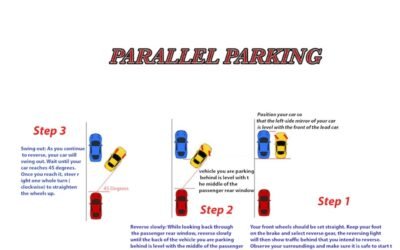When driving on UK roads, it is
In this article, we
Types of Signals on UK roads.
When behind the wheel, every road user you encounter, including drivers, cyclists, and pedestrians, will rely on your signals to understand your intentions. By signalling correctly, you keep yourself and everyone
- Indicators: These are the most common signals used by drivers to indicate when they plan to change direction or position on the road. They are one of the most
critical toolsfor drivers. - Brake Lights: When a driver uses their brake pedal, the red lights at the back of their vehicle light up to signal to other road users that they are slowing down. If a vehicle is following too closely, a driver can gently tap on the brake pedal to light up the brake lights (without significantly altering their speed) to tell the following driver to slow down and increase the space between the two vehicles.
- Road Position: A driver’s position on the road
can emphasise which direction they intend to take. For example, if a driver is turning onto a right-hand side road, they can position their car towards the right-hand side of their lane (as well as indicate). This informs other roadusers of where they are headed and gives them space to move into position if theyturn the other way. - Hazard Lights: When a driver turns on their hazard lights, all
car indicators turn on and light up. Hazard lights should be used sparinglyand in specificsituations. For example, when the driver’s carbreaks down,obstructs traffic, or warns other road users of a serious hazard up ahead. - Horn: The horn should only be used while driving to warn other road users that a driver is there. It should not be used when a car is stationary, or in a built-up area between 11 pm and 7 am.
- Headlights: The Highway Code states that drivers should only flash their headlights to warn other road users of their presence. Therefore, using headlights to tell other drivers to go ahead can be dangerous, as it is not always clear if the way ahead is safe. Flashing headlights is a useful alternative to
blowing the horn in situations whereit is discouraged. - Please note that if a driver responds to headlights without checking if it is safe to move, they can fail their driving test.
The Correct Signalling Procedure
When a driver intends to change direction or position on the road, it is crucial to use the correct procedure: the MSM (Mirror-Signal-Manoeuvre) routine.
For example, if a driver intends to turn left at the end of a junction, they need to check their mirrors to assess the position of traffic behind them.
When to signal
You should use your signals when:
-
Turn left or right -
Changing lanes or overtaking
-
Merging with traffic
-
Pulling over or stopping
-
Starting off from a parked position
In these situations, signalling gives other road users a clear indication of your intentions, and helps them anticipate your next move. It also
When not to signal
While signalling is
-
When driving on a straight road with no junctions or turns
-
When driving on a roundabout (unless you’re exiting)
-
When passing a parked car or other obstruction on the road
-
When there’s no other traffic
around, signal to
In these situations, signalling can be confusing or even misleading to other road users
How signalling affects your driving test
If you’re preparing for your driving test, it’s
To pass your driving test, you should:
-
Use your indicators to signal your intentions when turning, changing lanes, or merging with traffic
-
Use your brake lights to warn other drivers when slowing down or stopping
-
Use your headlights to warn other drivers of your presence
-
Use your hazard lights sparingly and only in emergency situations
-
Use your horn only when necessary to warn other drivers of your presence
Remember, signalling is not a guarantee of safety, and you should always drive defensively and be aware of your surroundings.
Conclusion
Signalling is



0 Comments